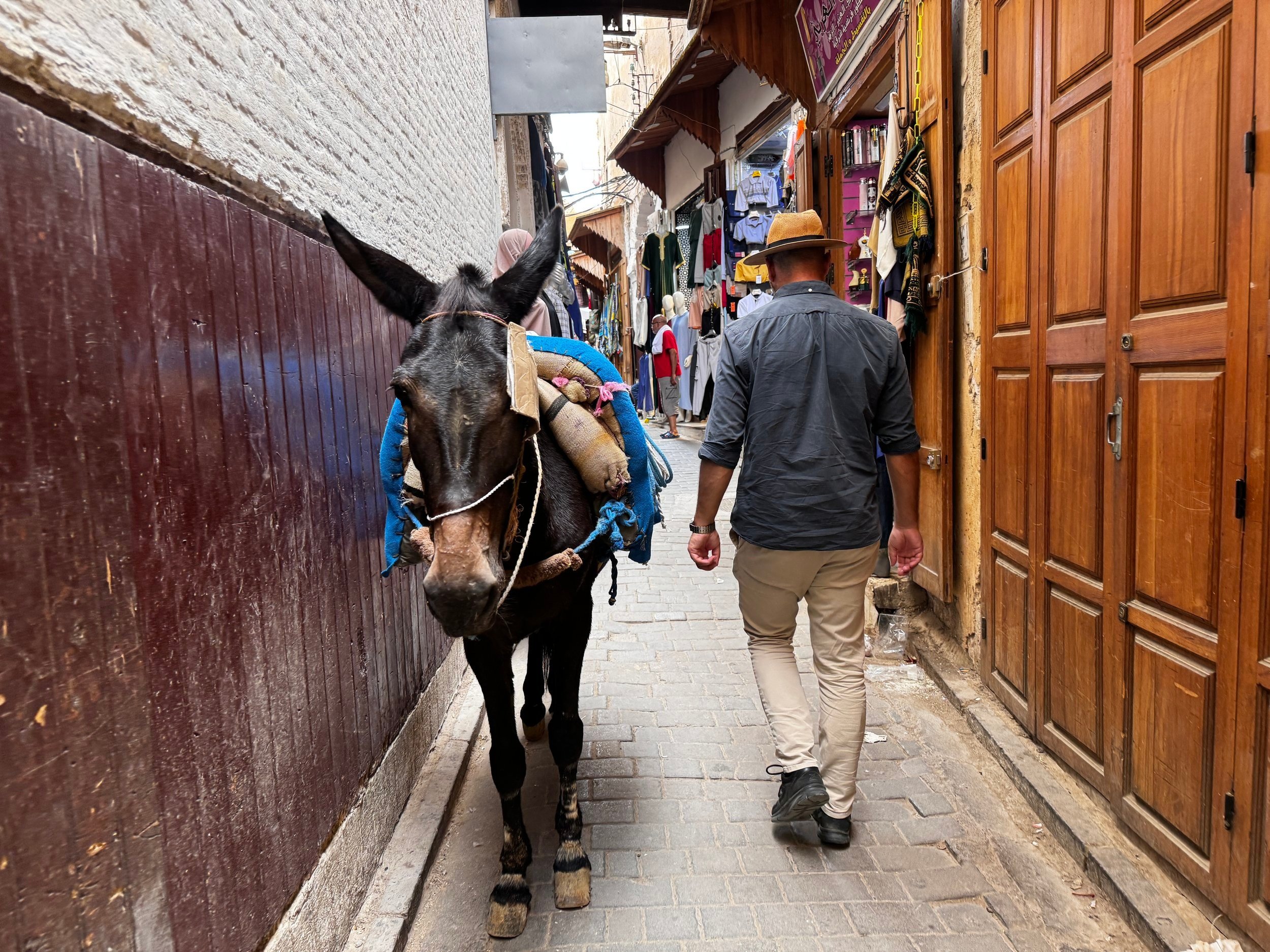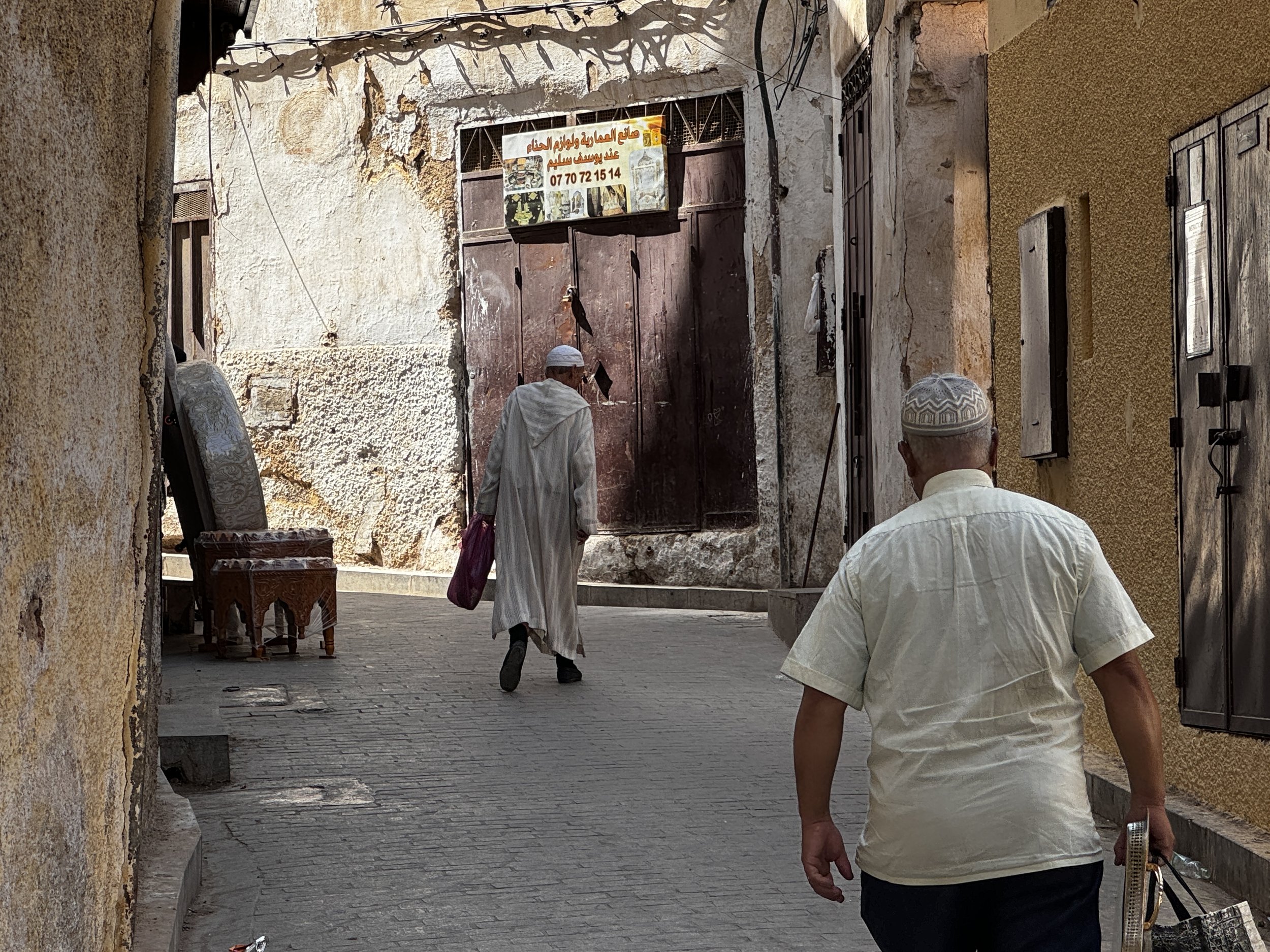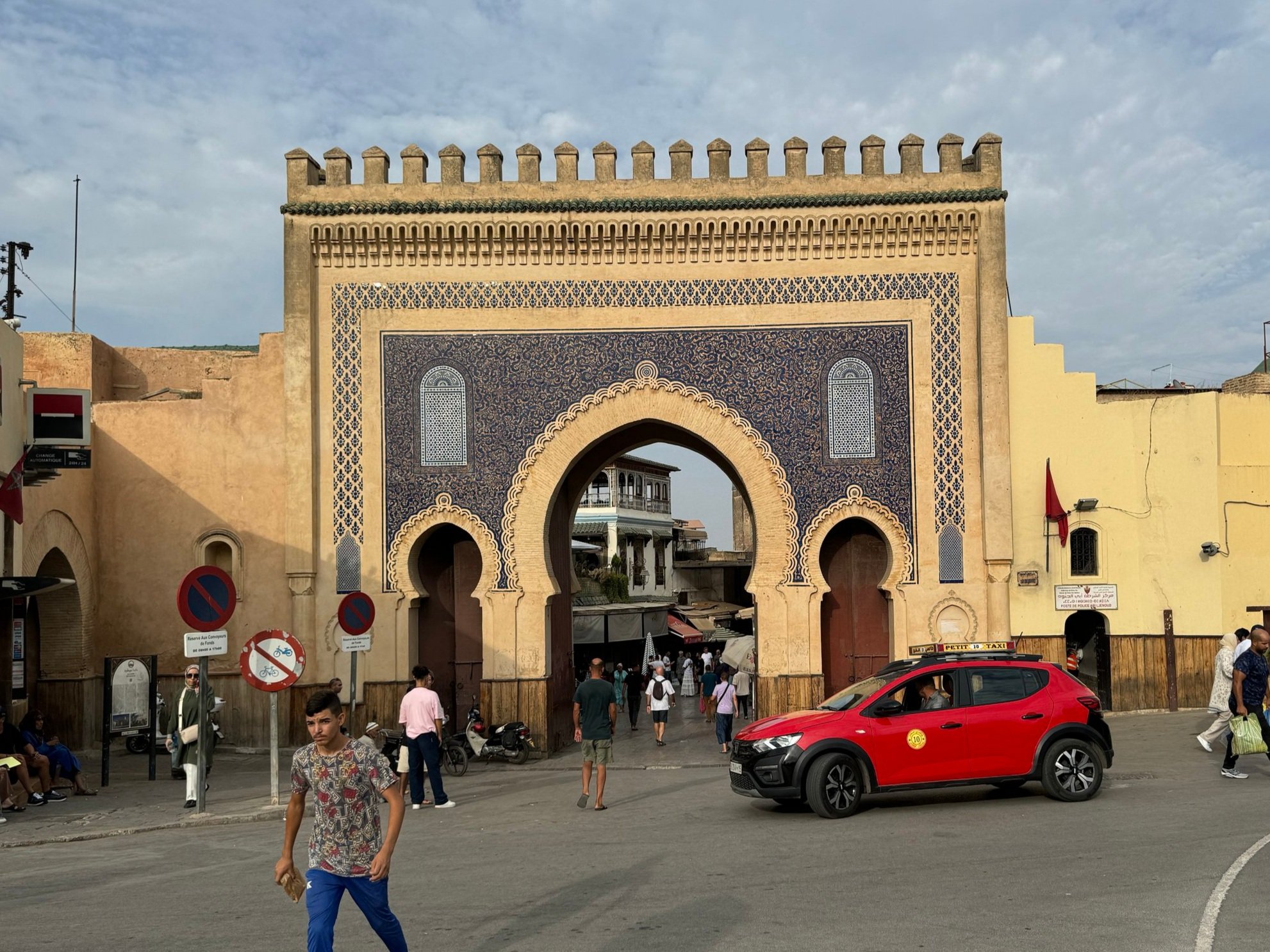Visiting Fez
Morocco - Part Two
We drove into the city of Fez one morning through low rolling hills covered with olive groves and fruit orchards. The ancient battlements flanked by stone towers, still partly enclose the old city.
Our driver, Karim introduced us to our guide for the day, a cheerful man named Sharif. He and his family have lived in Fez for about 15 years, he speaks fluent english (along with four other languages) and would be showing us around. After a brief discussion with Karim who told him what our interests are, Sharif set off to show us the Souk (marketplace) and Medina first.





The Medina of Fez is actually made up of two medinas; the older one established in the ninth century and what is considered the heart of the city, and the ‘newer’ medina built in the 13th century which replaced Marrakesh as the capital at that time. We set out through the maze of cobbled streets. Like ducklings, we trailed behind Sharif past tiled public fountains and shops displaying breads of all shapes and sizes, mounds of colorful spices and butcher shops displaying neat rows of goat heads and selling tubs of preserved camel meat. There were kiosks serving mint tea in small glass cups and fresh-squeezed fruit juices, stalls selling fresh-pressed argan oil and brightly colored leather slippers. Local workers wound through the cobbled alleys with their carts or donkeys transporting leather, fruit or precariously balanced propane tanks. They yell, “balak” as they go which basically means get the heck out of the way, plaster yourself against the wall, and let them pass.




















The neighborhood bakery.
Designated as a World Heritage site, Fez attracts numerous tourists year-round while still maintaining its traditions. It is considered one of the most extensive medinas in the world with over 9000 labyrinthine alleyways and 300 neighborhoods. Every neighborhood has five things; a communal oven, a mosque, a hammam (bath house), a fountain (fresh water), and a school. Many homes in the medina do not have ovens, so families send their bread, vegetables, even meats to be baked or roasted to the communal oven. The men who work there never mix up anyone’s bread either. Each family has their own mark, their style, or a different tea towel covering the dough, something to differentiate it from their neighbor’s bread. Sharif told us that the baker is who you go to if you want intel about a particular family - they know who makes the best bread (meaning which family you can let your daughter marry into)!
The streets are crowded and frenetic and filled with people, animals, crates of vegetables and mounds of herbs. Venders selling thick slices of cornmeal coated eggplant, potato puffs, and fried anchovy or something resembling smelt wrapped up in flatbreads. Giant pots of fava bean soup called bissara are doled out in small bowls with a drizzle of dark green olive oil and a sprinkle of cumin and paprika.
Fez medina is an authentic, spectacularly chaotic microcosm which we could NEVER have navigated on our own. Google maps is beyond it’s limits inside the walled maze. We were so thankful to be following Sharif - we may never have found our way out, though I did discern a very slight incline underfoot at the exit out through the gate.


We stopped at one of the tanneries and viewed the process from a balcony above. Made up of a large number of vats, the tanners treat goat, sheep, camel and cow hides (only ruminants - animals with multiple stomachs as single stomached animals too closely resemble humans). Vats filled with water and various substances including lime, salt and pigeon droppings are used to clean the hides. The skins are then transferred to the dyeing vats where natural products like pomegranate peel, poppy powder and tannins are added. The tanners stand in the vats rotating and agitating the hides, a process that requires dozens of operations including cleaning, rinsing, softening, drying and polishing. A single tanner will follow his hides throughout the entire process.





Around 5:30pm Karim returned us to our Riad where we showered and dressed for dinner. He picked us up an hour later and brought us to a family’s home deep in the medina where we would join them for a traditional Moroccan meal. We were met at the door by the father, Hassan, and then introduced to the mother, Chomeysa, and two of their four adult children, Amira and Yasmin. The meal began with Bissara (fava bean soup) which we were told they make and eat every day. The main course was Pastilla, a ground mixture of chicken, onions, almonds and spices wrapped in Warka (the phyllo dough we saw being made in the souk). It was served with what they call Taktouka, which is made with roasted red and green peppers, fresh tomatoes, garlic, olive oil and their unique family spice blend. The meal was quite simple and delicious. The conversation lively (their son, Yasmin spoke very good english and Karim helped when needed). After dinner they dressed us in traditional garb and we learned the proper way to serve tea. It was an awkward, funny and wonderful experience all rolled into one.




Leaving their house after dinner I realized that even at night the medina seems to move forward in a continuous swirl, oblivious to the outside world. It’s almost as though it cannot be judged or even understood, it just demands that you simply feel and participate in it. It’s an unending sensory storm of unapologetic commotion. Though we thankfully did not get physically lost, we certainly did get lost in the experience.
We returned to the comfort of our favorite Riad, relaxing on our rooftop terrace before falling into a dream filled sleep. We would need to be fully rested before further adventuring of Fez again the next day.







Note: photo captions will not appear if viewing on a cell phone.




